- Home
- Orhan Pamuk
The Innocence of Memories
The Innocence of Memories Read online
ORHAN PAMUK
The Innocence of Memories
Translated by Ekin Oklap
Contents
Title Page
A Novel and a Museum Are the Same Thing
Innocence of Memories (Screenplay)
Novel, Museum, Film …
Çukurcuma
Beyond Nişantaşı
The East–West Novel
The Changing Street
The Transformation of Istanbul
Aristotle and Time
Proust and Conscious Remembrance
Life–Happiness: The First and Last Sentences
Collecting Objects
Novel–Museum
Istanbul in Old Films
The Hilton Hotel in Istanbul
Istanbul and Walking
Art–Melancholy
Dogs and the City
Writing by Hand
Cigarettes and Suggestive Hand Gestures
On Füsun
Art–Literature: Am I Kemal?
Visiting the Museum
A Conversation with Grant Gee
About the Author
Also by the Author
Copyright
A Novel and a Museum Are the Same Thing
I wrote the novel while thinking of the museum, and created the museum while thinking of the novel. The museum was not just some idea I chanced upon after the success of the book, nor was it a case of the success of the museum begetting the novel, like the book version of some blockbuster film. In fact, I conceived the book and the museum simultaneously, and explained their intricate connection in the novel: a young man from a wealthy, westernised Istanbul family falls in love with a poor distant relation, and when his love goes unrequited, he finds solace in collecting everything his beloved has ever touched. Finally, as we learn at the end of the novel, he takes all of these everyday objects he has accumulated – postcards, photographs, matchsticks, saltshakers, keys, dresses, film clips, and toys, mementoes of his doomed love affair and of the Istanbul of the 1970s and 1980s whose streets he wandered with his lover – and puts them on display in Istanbul’s Museum of Innocence.
Back in the mid-nineties, when I first embarked on this artistic and literary project, my dream was to open the museum on the same day the novel was published. I would arrange the chapters in meticulous order, producing a museum catalogue that could be read as a novel – a postmodern sort of novel. But I finished the book before the museum, recasting it into the form of a traditional novel, without images or annotations, and published it in 2008. When I opened the museum in 2012, I realised I still needed an actual museum catalogue to explain the design and composition of the exhibition vitrines I had so painstakingly devised, and to showcase the objects and photographs in the collection, so I wrote The Innocence of Objects.
Now, there is a fourth work, one which I’d never imagined when I first embarked on this project: Grant Gee’s beautiful, enigmatic documentary film Innocence of Memories. This time I’m not the creative force behind the work; instead, my role is that of creator of the film’s focus, the Museum of Innocence, and author of the texts featured in the film.
It all started when Grant Gee came to Istanbul for a screening of his ingenious film on W. G. Sebald’s The Rings of Saturn. When I found out that Grant was interested in shooting a documentary about the Museum of Innocence, I was eager to get involved on the creative side. We met up in London, and talked for hours. Then we met up in Istanbul, and walked for miles. Was it Grant who asked, ‘Is there anywhere in Istanbul that means something special to you?’ or was it my idea to ‘show him around’? I can’t remember now. Perhaps we weren’t aiming for anywhere in particular, but hoping that our footsteps would help us to penetrate the emotional fabric of the city.
I ended up with conflicting feelings. As we roamed the streets, I was remembering a past that had been quietly fading away, and trying at the same time to work out which of the many things we saw might interest anyone other than me. Strolling through Istanbul with someone who was a stranger to the city I’d lived in my whole life lent me a different perspective on that life, on the city, and on my memories. When we come across something beautiful or interesting, how much of that is the city itself, and how much of it is our own nostalgia? How beautiful or how interesting can a city be without the benefit of our memories? And when buildings, bridges, and squares are demolished, are our memories erased and eroded with them?
Innocence of Memories is based as much on the novel as it is on the objects that inspired it (clocks, coffee cups, photographs, clips from old movies set in Istanbul), on daydreams lyrically layered, and on the actual landscape of the city. The camera’s focus on the streets where I found the objects for my collection befits my vision of what museums should be: the future of museums is in our homes, in our daily lives, and on the streets. Museums should no longer concern themselves with state histories, the sagas of kings and heroes, or the forging of national identities; they should focus instead on the lives and belongings of ordinary people, just as modern novels do. When I began to prepare for the novel and the museum, walking around the streets of Istanbul, raiding flea markets, second-hand bookstores, and the homes of friends and family for old pillboxes, ashtrays, framed pictures of mosques, identity cards, and passport photos, I realised that collecting artefacts for a museum is not very different from collecting stories and facts for a novel.
The love story in The Museum of Innocence takes place primarily between 1974 and 1980, while the museum features objects and images used and seen by the people of Istanbul and the characters in the novel across the second half of the twentieth century. But Grant’s curious camera was equally interested in the twenty-first-century city, the rapid, vicious urbanisation and accumulation of wealth that had taken place over the past fifteen years, and how the city’s new skyscrapers now coexisted with its older, melancholy soul. What could we do?
The protagonists of our unhappy love story had died, and the house they’d lived in had been converted into a museum. So I turned to a character who’d only had a minor role in the novel but nevertheless remembered the love affair clearly: Ayla. I imagined that she had left Istanbul for political reasons shortly after the time of the novel, only to find upon her return twelve years later that her city had been transformed. Just like me and Grant Gee, Ayla would go on long walks through the streets of Istanbul, while I happily transcribed her thoughts on the city, memory, and life.
This film, like the novel and museum, stems mostly from my endless wanderings in Istanbul. In the second half of the 1990s, I combed through the streets and neighbourhoods of the city centre in search of a building (that I could afford to buy) where the protagonists of my imaginary love story could live, and which I could later convert into a museum. (Houses and land were cheap back then, and there weren’t as many tourists around.) In 1998, I bought the first piece of my collection, the 120-year-old building in Çukurcuma which now hosts the museum. I kept walking, searching for old crockery, kitchen utensils, liquor bottles, keys, clocks, cigarette holders, and photographs of everyday scenes that would have been part of the lives of the invented characters who had lived in that building. (Istanbul’s flea markets, second-hand bookshops, and increasingly popular collectors of everyday paraphernalia hadn’t yet embraced the internet.) I began writing a new novel called A Strangeness in My Mind around the time that I was setting up the museum, and went on long night-time walks around the poorer neighbourhoods that stood at the heart of the city and were home to the hero of this new novel, a street vendor. Sometimes I would stay in my writing studio working on this novel until four in the morning, and I loved walking back home through those night-time streets shrouded in darkness and silence. In our l
ong walks with Grant through some of the city’s more deprived, dangerous, remote, and crumbling neighbourhoods, we saw the same dogs that have been ruling the streets at night since Ottoman times. Their packs had perhaps disbanded, but lone dogs still padded patiently down the infinite streets of the city, and keenly observed our progress. On our walks, we seldom spoke; much like Grant’s camera in Innocence of Memories, we concentrated only on the emotions evoked by the city’s darkened nooks, its ruins and shadows. Maybe that’s why Grant never asked me the question everyone else always does: ‘Why did you decide to create this museum when you’d already written the novel?’ Had he asked, I wouldn’t have given him my usual answer: ‘I was possessed by a jinn.’ Nor would I have told him, ‘When I was younger, I wanted to be a painter.’ Instead, I would have said, ‘Perhaps a novel and a museum are more or less the same thing.’
INNOCENCE OF MEMORIES
(Screenplay)
AYLA: As soon as I saw Füsun’s dress in the Museum of Innocence, I remembered it. We had bought it together, cheaply, in a backstreet in Beyoğlu.
My name is Ayla. Füsun was my friend. I was her neighbour for eleven years. From 1974 to 1985, we were her father Tarık Bey’s ground-floor tenants. Later, I got married and went to live in Beşiktaş. My husband is an electrical engineer. He joined the electrical engineers’ union and got mixed up in politics. He was put under investigation. We had our children to think of, so when the rumour spread that they were going to start arresting people, we fled to Bremen in Germany. We didn’t come back for twelve years.
When I returned to Istanbul in 2013, twelve years later, I found that the city had changed completely. Getting to know your own city all over again is like making new memories. But all I did was search for my old ones.
That’s how I ended up in Çukurcuma, the neighbourhood where Füsun used to live. It was early evening but already dark, and there, in front of me, was our old house. The same building where Füsun had lived on the floor above us, with her mother Nesibe and her father Tarık, was now a museum: the Museum of Innocence. Its main entrance was the same door that once used to lead into the apartment we rented. They were selling tickets at the door, and the usual silence of museums reigned inside.
INNOCENCE OF MEMORIES
ORHAN PAMUK AUDIO GUIDE: Welcome to the Museum of Innocence. This is Orhan Pamuk. This audio guide has been prepared to guide you through our museum. I will also read some extracts from my novel The Museum of Innocence. The novel, beginning in 1974, tells the story of protagonist Kemal’s love for his distant relative, Füsun. After Füsun marries someone else, Kemal continues to visit her for nine years here in this house, now turned into a museum, and collects everything that reminds him of his beloved.
AYLA: I knew there was a novel about Füsun. I was one of the people Orhan Pamuk spoke to while he was writing it. I’ve read the book: in fact, I’m in it. I’m there as one of Füsun’s friends, one of those people who told him her story. He gets the two of us mixed up in some parts, which doesn’t surprise me at all. Towards the end of the 1970s and in the days following the coup in 1980, Füsun and I were inseparable.
ORHAN PAMUK AUDIO GUIDE: The Museum of Innocence has five floors. The Keskin family lived on the first and second floors of this building between 1974 and 1999. Now please walk up the stairs ahead of you to reach the first box, which corresponds to the first chapter of the novel. I wish you a happy and enjoyable visit.
KEMAL: It was the happiest moment of my life, though I didn’t know it. Had I known, had I cherished this gift, would everything have turned out differently? Yes, if I had recognised this instant of perfect happiness, I would have held it fast and never let it slip away. It took a few seconds, perhaps, for that luminous state to enfold me, suffusing me with the deepest peace, but it seemed to last hours, even years. In that moment, on the afternoon of Monday May 26th, 1975, at about quarter to three, just as we felt ourselves to be beyond sin and guilt, so too did the world seem to have been released from gravity and time.
When we met the next day, Füsun told me she had lost one of her earrings.
AYLA: I read that the love story started like this. Kemal’s fiancée Sibel happened to spot a designer handbag in the window of the Şanzelize Boutique and casually mentioned how much she liked it. And I read that later, to surprise her, a month away from their engagement party, Kemal returned alone to buy the bag. The shop assistant who served him was Füsun. As soon as he saw her Kemal felt his heart in his throat with the force of an immense wave about to crash against the shore. And I read that Kemal watched as Füsun retrieved the handbag from the shop window and slipped off her yellow high-heeled pump, extending a bare foot whose nails she’d carefully painted red. And I read that though it wasn’t even May yet, her long, bare legs were already tanned. At least, that’s how Kemal told it to Orhan Pamuk.
INTERVIEW, EMRE AYVAZ: Orhan Pamuk is a Turkish novelist, born in Istanbul in 1952. He has been writing novels in the city for forty years. He has had nine novels published so far, and ever since his books began to be translated into foreign languages, he has become known throughout the world as a writer of Istanbul, particularly through his novels The Black Book, My Name is Red, and The Museum of Innocence, published respectively in 1990, 1998, and 2008. In 2006, Orhan Pamuk was awarded the Nobel Prize for Literature. His latest novel, A Strangeness in My Mind, was published in 2014. His Museum of Innocence, which shares the same name as the title of his previous novel, opened in Istanbul in 2012.
INTERVIEW, ORHAN PAMUK: I wanted readers of the novel to know that the objects described in the book and used by its characters were also displayed in an actual museum. Ideally, readers of The Museum of Innocence should know that there is a museum of that name, and visitors to the Museum of Innocence should know that there is a corresponding novel. But I’ve also met readers who’ve never seen the museum. Some people think the museum is some sort of Borgesian joke. Conversely, around 50 per cent or 60 per cent of visitors to the museum are people who haven’t read the book. They have a different perspective; they come in search of a quirky cultural experience.
AYLA: When I came back to the city after twelve years, the Museum of Innocence was the place where I felt most at home … Every time I came back to it, I discovered a little bit more about the magic of ordinary objects. Perhaps all our homes are museums, really.
INTERVIEW, ORHAN PAMUK: I first had the idea for the Museum of Innocence in the mid-nineties. My books were getting translated into foreign languages, and I often travelled to Europe for festivals, book launches, and talks. I was curious about Europe, and I used my spare time during those trips to see as many museums as I could, large or small. In this way I began to appreciate smaller museums, seeing how similar they were to novels. You can go to the Louvre for a comprehensive history of French art, but the Edith Piaf Museum in Paris will enable you to experience 1950s France through the life of a single person. My enthusiasms can be sudden and variable, and soon I had made up my mind: ‘I’ll set up my own little museum.’ I didn’t have the money to pay for it, but I was determined. Then I began to plan an experimental novel. It would be structured in such a way that its publication would naturally complement the museum.
AYLA: At the start of the affair in May 1975, Füsun was just eighteen, a poor distant relation. At the end, August 28th, 1984, she was twenty-seven. She and Kemal made love forty-four times. She had honey-hued arms and quick, elegant gestures. She smiled the well-measured smile of well-mannered beauties accustomed to compliments. She swam gracefully and very fast. Sometimes she would assume a little girl’s expression. She would go by herself to paint birds. She blushed. She would sulk. She yawned so beautifully. She told him that when they first made love, she was imagining a field of sunflowers. Kemal was thirty-one when he met Füsun, thirteen years older, almost a different generation. Perhaps this explains his first and maybe fundamental mistake. He told Füsun that she was modern and courageous to give him her virginity. I suppose he meant it
as a compliment, but to her it would have meant that he would feel no special obligations to her just because she’d slept with him, and that if she was ‘modern’, she would not see sex with a man before marriage as a burden, and neither would she worry about being a virgin on her wedding day. She would, in fact, be just like those European women that men like Kemal entertained in their fantasies. It’s difficult to believe how important these ways of thinking were back then. And I read that even though he and Füsun met every day in secret and made love for hours at a time with ever-increasing abandon, Kemal never asked himself what allowed him to feel such pleasure with her. He told Orhan Pamuk that he behaved only like a child greedily gulping one sweet after another.
KEMAL: If the man tried to wriggle out of marrying the girl he slept with, and the girl in question was under eighteen years of age, an angry father might take the philanderer to court to force him to marry her. Some such cases would attract press attention, and in those days it was the custom for newspapers to run photographs with black bands over the ‘violated’ girls’ eyes, to spare their being identified in this shameful situation. Because the press used the same device in photographs of adulteresses, rape victims, and prostitutes, there were so many photographs of women with black bands over their eyes that to read a Turkish newspaper in those days was like wandering through a masquerade. All in all, Turkish newspapers ran very few photographs of Turkish women without bands over their eyes, unless they were singers, actresses, or beauty contestants (all occupations suggestive of easy virtue, anyway), while in advertisements there was a preference for women and faces that were evidently foreign and non-Muslim.

 Snow
Snow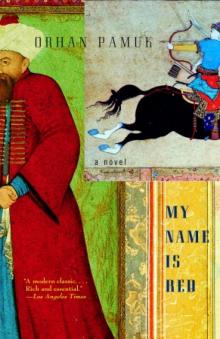 My Name is Red
My Name is Red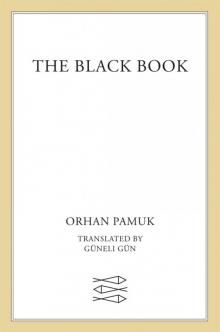 The Black Book
The Black Book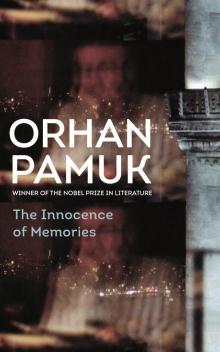 The Innocence of Memories
The Innocence of Memories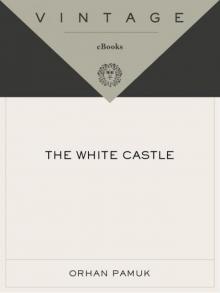 The White Castle
The White Castle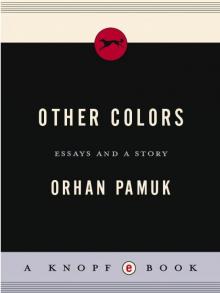 Other Colors
Other Colors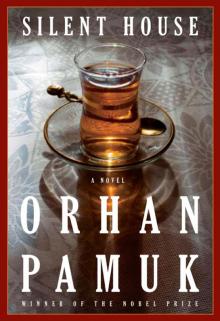 Silent House
Silent House The Red-Haired Woman
The Red-Haired Woman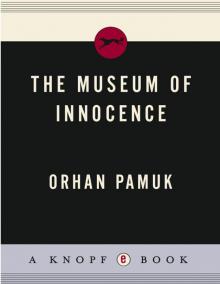 The Museum of Innocence
The Museum of Innocence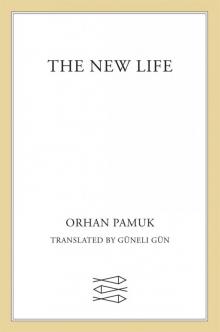 The New Life
The New Life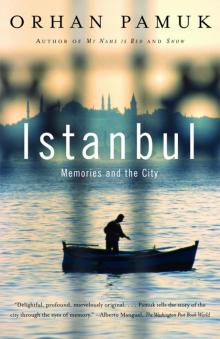 Istanbul
Istanbul